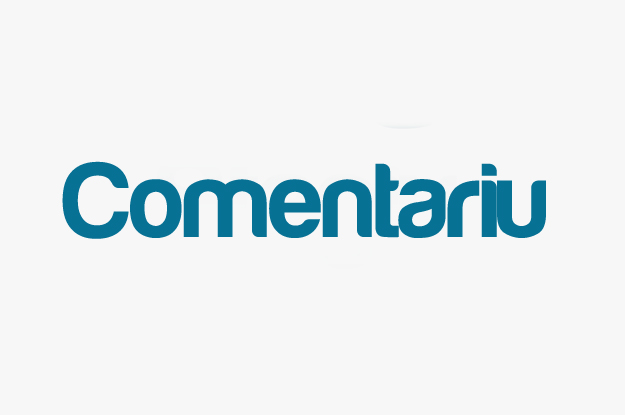
 Aneta Gonta, Media Expert
Aneta Gonta, Media Expert
In this comment, we will refer to concentration of the television for at least three reasons. Firstly, because the phenomenon here really has reached worrying proportions, secondly, because only the audiovisual legislation contains provisions on property transparency and limits to prevent ownership and / or control in this sector, and last but not least, because television is the most important source of information for the citizens of the Republic of Moldova.
(...)
Thus, the number and nature of television owners matter in the process of concentration, in particular, on a small market, and this first aspect was the most debated one in our public area. We seem to know how the situation in the TV sector has become a worrying phenomenon: the pro-European government, acting as a “Prince Charming” after eight years of Neo-Communism, amended the Audiovisual Code in 2010, so that an owner could own not two, but five broadcasting licenses in the same administrative territorial unit or area.
Therefore, in the years to come, the great concentration of ownership took place, and in 2014, we found that four national coverage TV channels out of five (i.e. those covering over 60% of the country’s territory) belonged to the same owner, an important member of a political party. However, it was only in November 2015 that changes in property transparency were confirmed by other suspicions of incestuous connections between major television owners, the world of politics and business. In 2016, due to the declared desire to reduce audiovisual monopolies, the Parliament approved the amendments that inter alia referred to two licenses an owner was allowed to hold in the same area. In May 2017, after the amendments regarding the renunciation of the licenses held until their expiry came into force, the sole owner of the audiovisual institutions concerned by these amendments (the DPM leader) transferred the license for two TV channels out of four. The BCC immediately accepted the transfer request, and two TV channels became owned by a company which belonged to the DPM chairman’s counselor. That is, the politician complied with the law. Besides, while respecting the law on the number of licenses or property transparency, other important TV channels in the country are affiliated with the political sphere (for example, de jure owners of three TV stations have direct or indirect affiliations with the party the current president of the country belonged to, and at least three other TV channels are associated either with politicians or businesspeople with political interests / affiliations).
Therefore, although still quite imperfect, the legislation has been amended so that we know where the TV channels are focused. As a result, at the end of 2017, in the election year, we have at least two poles of ownership of television, which, while complying with the legal rules on the number of licenses and the transparency of the owners, are susceptible to generating dominant positions in shaping public opinion.
Concentration of Media Content Production
However, the fact that two televisions belong to the same owner, and several others to persons from their circles, may not automatically and necessarily generate dominant positions in shaping the public opinion. The danger arises and / or grows when, in conjunction with property, the phenomenon that Andrea Czepek, an expert from Germany, calls the concentration of content takes place and leads to the deformation of the free market of ideas. The example of the two poles mentioned above is also eloquent in this respect. The mini-analysis that we made in September 2016 reveals that the themes, titles, texts, and images that accompany the news of the day’s main bulletin broadcast within five days by four TV stations belonging to the same owner (the DPM president), coincide in the proportion of 99%. For comparison, we analyzed the newscasts from the same four TV stations in September 2017, after the transfer of two licenses and the diversification of the owners. Out of ± 200 news broadcast by the four TV channels in the bulletin for 4 days, ± 180 repeats on all the TV channels, with little differences in their titles and / or content. Moreover, at least two topics in each bulletin are taken from a “rival” channel, including as the first news item. Similarly, the “parent television” of a good portion of similar content broadcast by the four stations cannot be detected, but the fact that it is distributed to all the TV channels indicates a clear link. Therefore, things did not change with the owner’s official transfer of two out of four TV stations. The second example is the three TV stations owned or indirectly owned by persons close to the SPRM. The five-day monitoring of the main newscasts (November 2017) shows that two stations (belonging to the same owner) broadcast not only the same content but also identical newsletters with the same presenter, with the only difference that one channel shows a shorter bulletin. The satellite station does not point out anywhere that the material is a “borrowed” one, and no changes are made to the text, the images, or the news headlines. Reporters speak at the microphone on another channel and are presented as journalists, without specifying the station they are working for. The third TV channel, which belongs to another owner but is affiliated to the same party, prepares its own texts, but the messages are similar, with the only difference that some materials are detailed and / or divided into smaller subjects. We accept the situation in which the TV channels referred to in the first and the second examples have a perfectly legal cooperation agreement, but it is certain that the element of content concentration is obvious and distorts the free market of ideas by presenting a limited number of opinions and ideas. (...)




